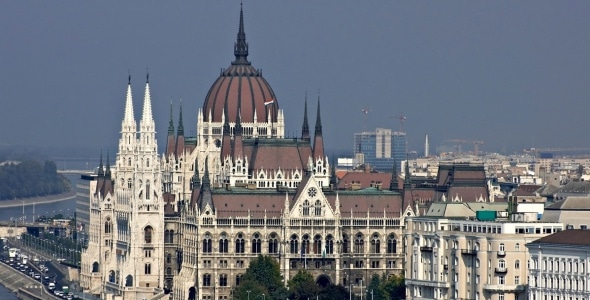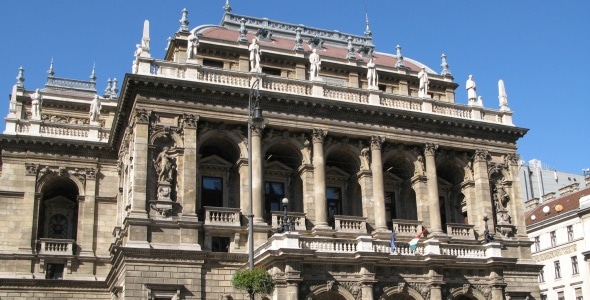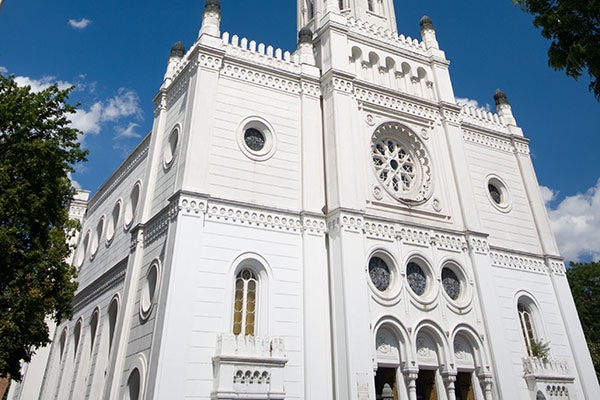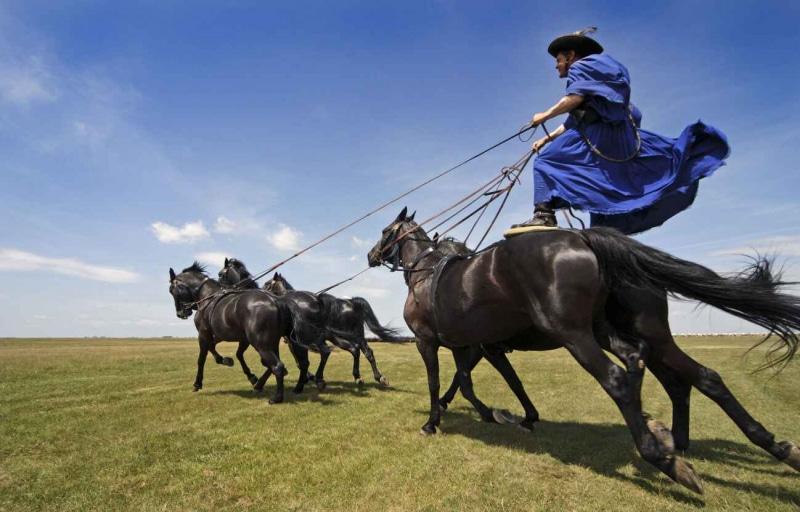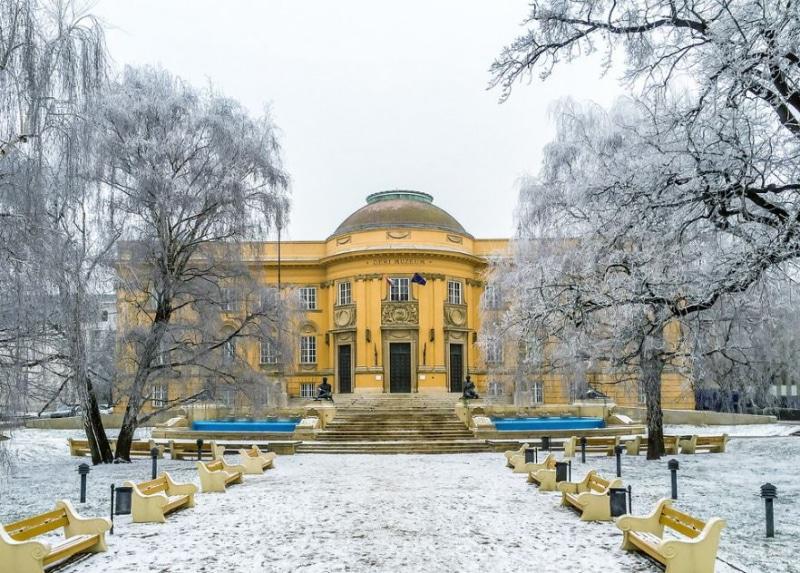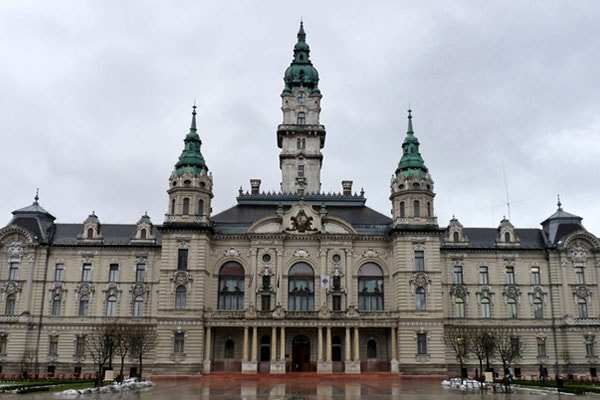ArtandCulture, Hungary
Removed from Unnamed collection
Budapest Parliament
The Parliament building, a magnificent example of Neo-Gothic architecture (although displaying Renaissance and Baroque characters too), is just over 100 years old. In the 1880's an open tender was held for the design of the Parliament building.
Guided tours of the Parliament are available when the National Assembly is not in session. The tour takes about 45 minutes, and is well worth the price, as it covers the main entrance stairs and hall, one of the lobbies, the old House of Lords and the Hungarian Crown Jewels. http://visitbudapest.travel/guide/budapest-attractions/budapest-parliament/
Map
Removed from Unnamed collection
Budapest Opera House
You can tour the Opera House during the day and learn about its gorgeous architecture as well as enjoy a world-class performance in the evening. The opera house in Budapest stands as one of the most beautiful Neo-Renaissance buildings in Europe. When it was opened in 1884, the city shared the administrative duties of the Austro-Hungarian Empire with Vienna. Emperor Franz Joseph commissioned its design. Construction included the use of marble and frescos by some of the best artisans of that era. Designed by Miklós Ybl, one of Europe's leading architects in the mid to late 19th century, the Budapest Opera House quickly became one of the most prestigious musical institutions in Europe. Many important artists performed here, including Gustav Mahler! http://visitbudapest.travel/guide/budapest-attractions/budapest-opera-house/
Map
Removed from Unnamed collection
Big Catholic Church
Let's start our walk in the main square of the "Famous Town" that used to be the market-place for centuries. Here you can find the Big Catholic Church which is the largest cathedral in the Great Hungarian Plain built in the style of the age of Louis XVI of France. Looking down from the 73 meter tall tower you can see the panorama of the town. https://www.budapest.com/hungary/kecskemet/sights/big_catholic_church.en.html
Map
Removed from Unnamed collection
Kecskemet Town Hall
The neighbouring building is the Town Hall built by the plans of Ödön Lechner and Gyula Pártos.
The 150-year-old building of the City Hall was demolished in 1892. József Katona, the writer of our national drama worked there for 10 years. He collapsed and died at the entrance. The cracked stone monument set up at the scene of his heart attack in front of the building reminds us of this tragic event. The notice on this monument says: „The heart of the son of Kecskemét broke here.” In 1895 the offices moved into the building of which area is 5534 m2 and has 174 rooms. On the 8th July, 1911 there was a huge earthquake in the city which did not spare the City Hall either. Its collapsed chimneys and cracked walls were soon reconstructed under the direction of Ödön Lechner. The style of the building with its nearly rectangle-shaped ground-plan mixes the forms of the French Renaissance architecture and the elements of our popular art. The Ceremonial Hall is the venue of the General Assembly meetings of the city, national and international conferences, wedding ceremonies and ceremonial receptions.
The period furniture of the Ceremonial Hall is handicraft work. The wooden furniture and the printed leather backed chairs were made in Szeged according to the design of Lechner and Pártos. The beautiful and richly coloured glass windows were made in the workshop of the famous Miksa Róth. The decorative wall-painting was made by Adolf Götz, the wall-candlesticks and the chandelier were made by Sándor Árkay, Imperial and Royal locksmith upon the basis of the designs of Szilárd Várady.
The paintings were made by the famous Hungarian painter Bertalan Székely. These paintings show some periods of the Hungarian history embracing one thousand years. https://www.budapest.com/hungary/kecskemet/sights/town_hall.en.html
Map
Removed from Unnamed collection
Hortobagy
Proudly bearing its title of UNESCO World Heritage Site, Hortobágy National Park is the perfect archetype of pristine natural landscapes. This is the place where everyone longs to find refuge from the monotony of modern human existence. The feeling of unfettered freedom, encapsulated in the spectacle of the endless horizon, mirages, grazing herds of cattle and horses, and sweep-pole wells, will capture your imagination and soul during a horse-and-carriage ride or “puszta” safari.
A picturesque trip to the fishponds on the small narrow-gauge train, combined with some birdwatching, will serve unique experiences to both young and older adventurers. Here the breeze wafts the scent of fragrant chamomile, mint, and artemisia from wild fields, gently touching your nose just like the waves of the ocean rhythmically splashing on the shore. It is a place where you will reinterpret the meaning of silence.
It is a place where you might even reach celestial bodies during the special night treks in Starry Sky Park. In Hungary’s oldest and largest national park, awarded the European Destinations of Excellence (EDEN) prize, hundred-year-old herdsman’s traditions are still part of people’s means of subsistence and not mere promotional gimmicks. https://visitdebrecen.com/see-do/hortobagy/
Map
Removed from Unnamed collection
Deri Museum
The Déri Museum is most famous for being the home of the greatest works of one of Hungary’s most famous and celebrated artists, Mihály Munkácsy, as well as the huge collection of other items, brought together by Frigyes Déri.
Munkácsy’s awe-inspiring Christ Trilogy is housed here, the first of the trilogy, entitled front of Pilate was painted in 1882, followed by Golgotha in 1884. The trilogy was completed with Ecce Homo in 1896.
In addition to its exhibits of local cultural interest, the Déri Museum has become renowned for Frigyes Déri’s collection of weapons.
The weapons collection is particularly fine, comprising of three parts. Weapons from Christian Europe, from the 15-18th. The second part is comprised of classic Muslim weapons from the territory of the Ottoman Empire and Persia. The third part, although the smallest is the finest part, is the weapons collection from the Far East.
The Japanese collection is of commonly used items made in the Edo era and is undoubtedly the best in Hungary. https://visitdebrecen.com/see-do/deri-museum/
Map
Removed from Unnamed collection
Gyor Old Town Hall
Above the beautiful bay window of the Baroque building the coat of arms of Győr can be seen; the city archives can be found in this house. https://www.budapest.com/cities_in_hungary/gyor/sights/old_town_hall.en.html
Map

